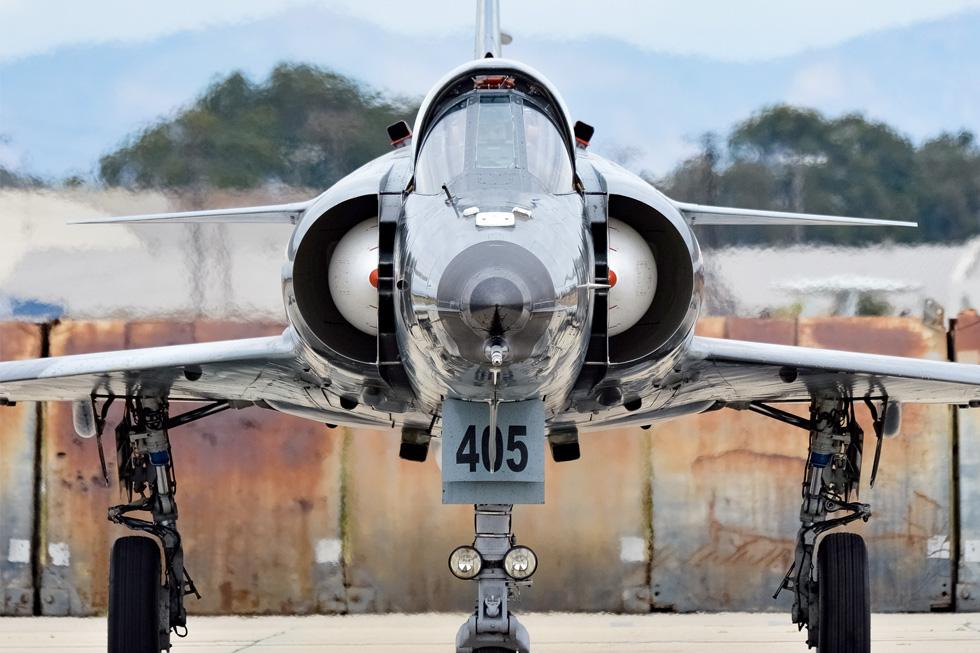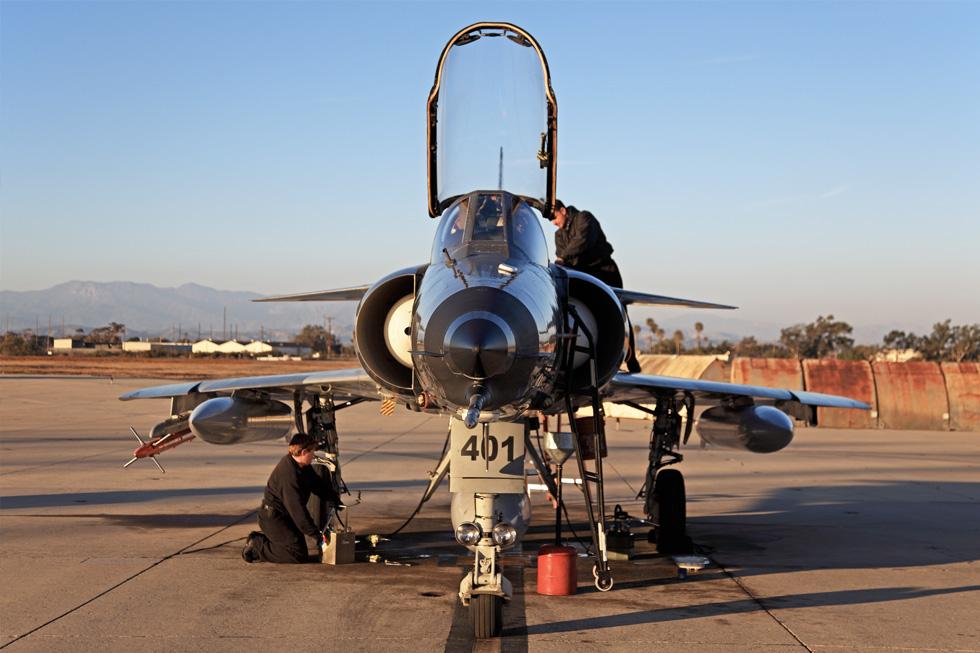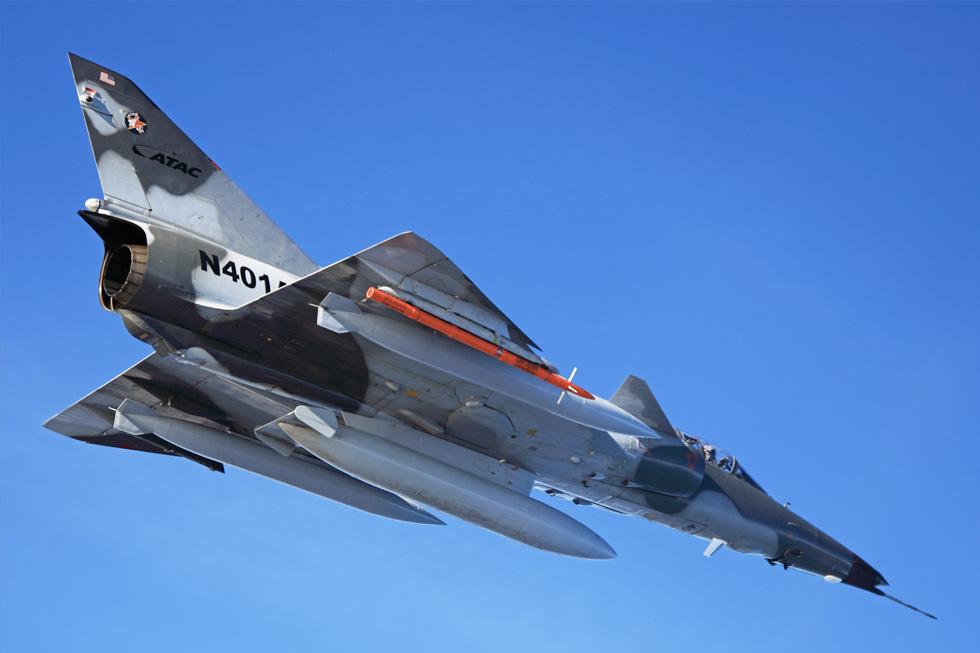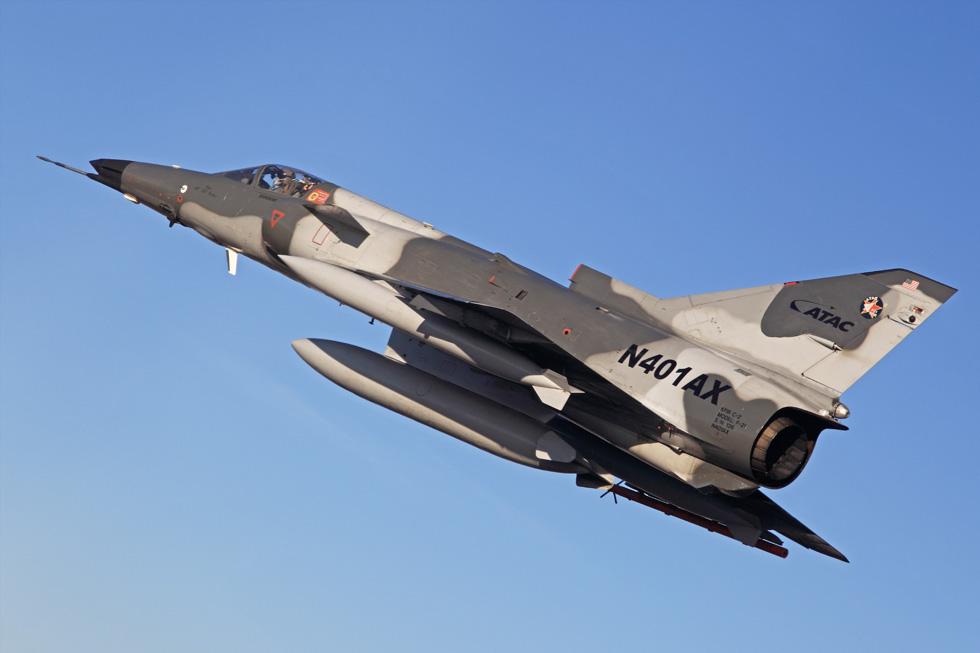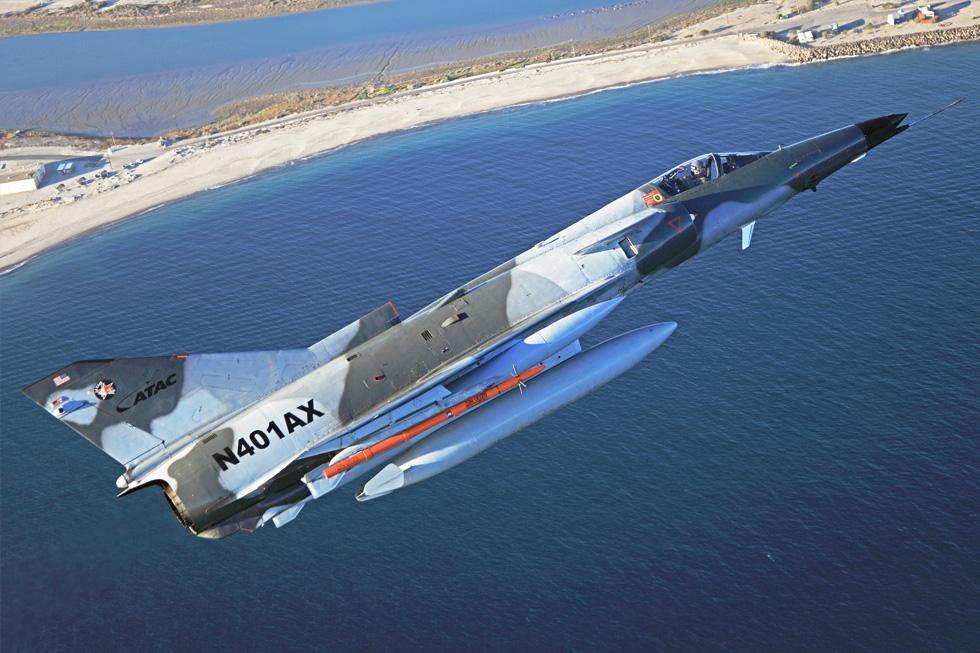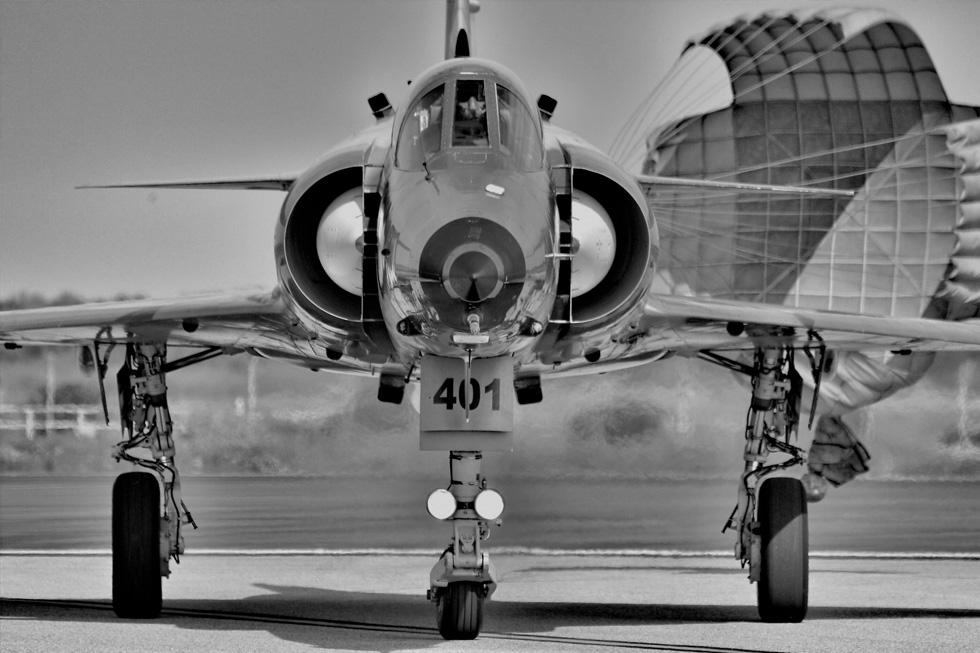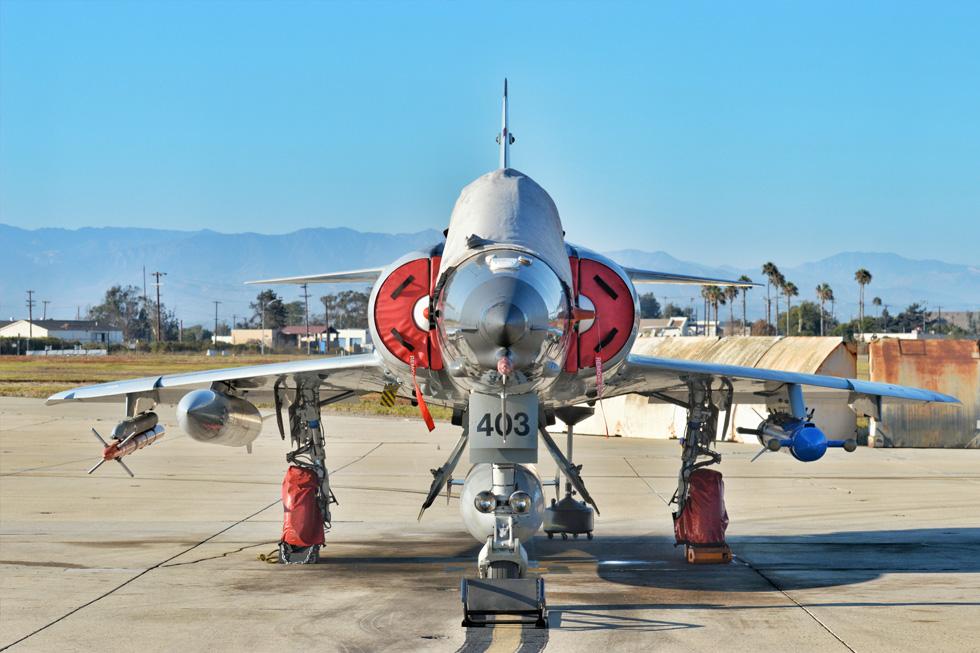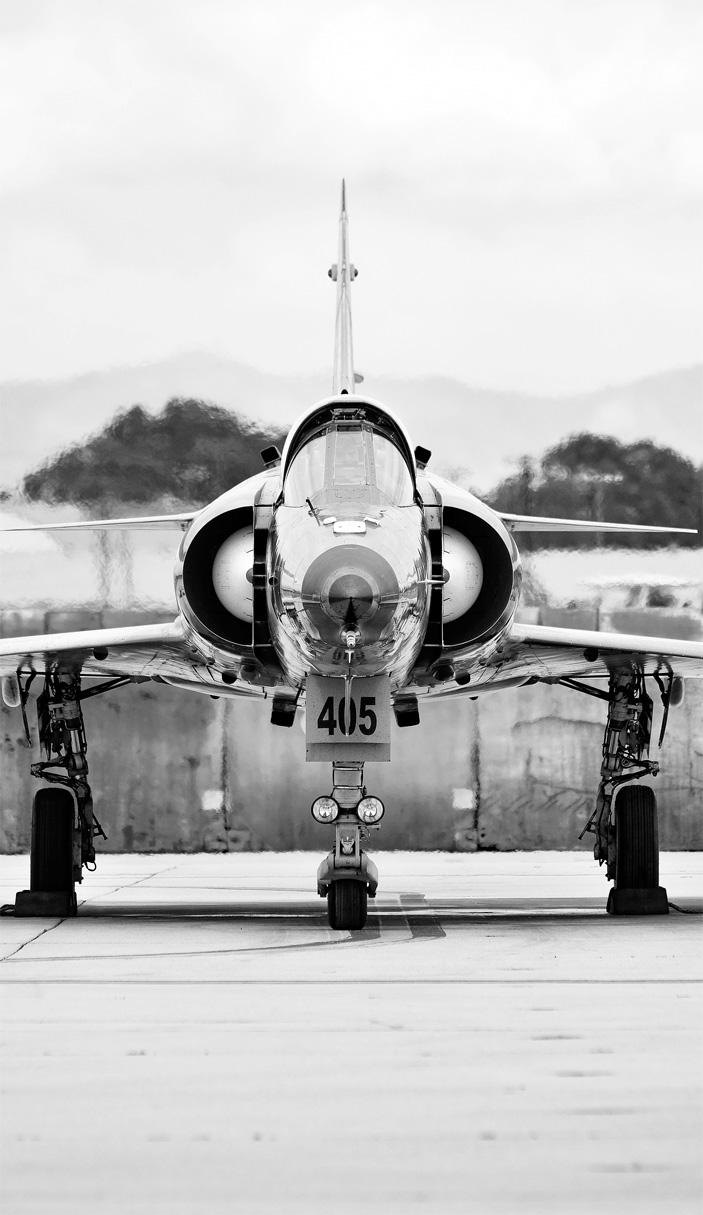
F-21 KFIR
Type: F-21 Kfir
Max Speed: 750 KIAS / Mach 2.2
Max Range with 2 Tanks: 1,550 NM
G-Limits: +7.5g / -3.5g
Ceiling: 55,000 ft
Max Climb Rate: 30,000+ fpm
Endurance: 2.0 hours
First flown in June 1973, the Kfir-C1 was, in essence, the airframe of the Dassault-Breguet Mirage III/5 series mated to the General Electric J79 afterburning turbojet, and fitted with a suite of Israeli electronics. The type was designed after the manufacturer had gained experience with the Nesher (Eagle), which was an unlicensed copy of the Mirage III-CJ with an equally unlicensed Atar turbojet. The jet was initially produced for Israeli service but later exported as the Dagger.
The Kfir-C1 entered limited production (27 aircraft), with two squadrons equipped beginning in 1974, pending the introduction of more advanced derivatives. Kfir-C1 fighters with small canards but no armament were delivered to the US Navy and Marine Corps in 1985 with the designation F-21A for use as aggressor aircraft in dissimilar air combat training. Those aircraft served in the Navy and Marine Corps until they were retired in the 1990s.
The Kfir-C2, introduced in 1976 after a first flight in 1974, was a new version of the Kfir. The Kfir-C2 was designed to keep the type viable against all conceivable threats well into the 1990s. The result was a warplane with formidable combat capabilities thanks to its sustained maneuverability and control effectiveness resulting from its aerodynamic developments. The type is distinguishable from the Kfir-C1 by its dog-toothed outer wing panels, small under-nose strakes and, most importantly, swept delta canard fore-planes.
The Kfir-C7 is the definitive single-seat version introduced in 1983. The Kfir-C7 is based on the Kfir-C2 with a specially adapted version of the J79-GEJ1E with 1,000 pounds more afterburning thrust. The type has two extra hard-points and several advanced features including the capability for the carriage and use of 'smart' weapons. The aircraft has an Elta EL/M-2021B Pulse Doppler radar, a revised cockpit with more sophisticated electronics and HOTAS (Hands On Throttle And Stick) controls, and provisions for in-flight refueling. Maximum take-off weight was increased by 3,395 pounds but combat radius and thrust-to-weight ratio were improved to a marked degree.
ATAC deploys the Kfir in a variety of roles. The aircraft is a formidable air-to-air adversary, it performs well as a high fast flyer (HFF), and it can simulate high speed missiles or adversaries in all integrated training scenarios.
